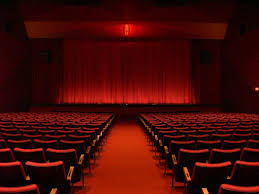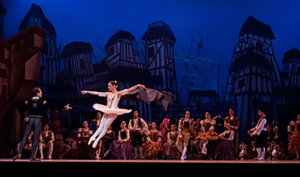Performing Arts PR 101
Published on March 2, 2018, at 3:30 p.m.
by Elizabeth Driver.
Theater. Music. Dance. In the performing arts, you can never see the same show twice. Different from any other art form, live performances change with every curtain call. Audience members witness a one-of-a-kind performance that can never be viewed again.
The same can be said for the public relations function of the performing arts. This nonprofit sector offers professionals unique experiences that cannot be gained in any other industry.
The wearer of many hats
In a performing arts organization, the duties of the public relations manager usually include more than promoting a show or securing media placement.

For Elizabeth Daniell, the communications manager for the Atlanta Symphony Orchestra, this position includes coordinating the organization’s monthly program book, editing print materials, and writing corporate communication pieces for board members and leadership.
“In a nonprofit, you wear many hats. Things come up and you have to take that on as your job too,” Daniell said. “It’s fun to think through different lenses and figure out the right communications for different scenarios, like patron relations or fundraising.”
Public relations activities differ at every nonprofit arts organization and can include everything from creating fliers to grant writing.
According to the American Association of Community Theatre, companies will sometimes have the same person handle the organization’s marketing, promotions and public relations functions.
Adam Miller is the managing director of Theatre Tuscaloosa. Along with public relations and marketing, he handles the “business management aspects” of the organization, such as budgeting, ticket office operations and human resources.
“What you are investing in is a product that improves society. You find yourself doing whatever it takes to reach that goal,” Miller said. “I don’t have just one set of things that I do every day in a repetitive nature. That is what is cool about this kind of environment.”

Maintaining audience engagement
In a typical season, a performing arts organization can run the same show for multiple weeks. After all the performance promotion is complete, there can be a period of slow news coverage. During this dry spell, public relations practitioners sometimes search for other ways to create newsworthy content for their organizations.
In her book “Standing Room Only: Marketing Insights for Engaging Performing Arts Audiences,” author Joanne Scheff Berstein stated that one of the goals of public relations is to involve people with the shows or concerts to make them feel included in the “action on stage.”
In between shows, Theatre Tuscaloosa engages its nearly 5,500 email subscribers in spotlights or human-interest stories about new cast members, according to Miller.
“We try to keep [patrons] engaged with us and keep them up to date on what is coming up,” Miller said. “We are constantly trying to stay top of mind for folks in different ways through different media.”
Aside from maintaining the organization’s news coverage, arts publicists are responsible for building relationships with new audiences that could be interested in future events or programming.
The Atlanta Symphony Orchestra, unlike theater organizations, hosts different shows every weekend. According to Daniell, she continually thinks about how to tailor the symphony’s messaging and find media outlets to reach specific audiences.
“You have to be creative and be thinking about ways the symphony can be of interest to the general public,” Daniell said. “Maybe next week we have a violinist, and there is a specific violin-related media platform, so then we know to reach out to them.”
Transparency is key
In the performing arts, controversial narratives and themes can arise, especially in the theater. The arts expose people to new experiences and ideas, but on occasion, the content of a particular play or piece can be negatively received by audience members.
“It’s a fine line with public relations,” Miller said. “We are sometimes challenging society’s norms and challenging people to think outside of what is comfortable.”
The National Coalition Against Censorship advises organizations to provide audiences with detailed information about a potentially controversial piece and use it as an opportunity to engage community dialogue.

Theatre Tuscaloosa provides information about the content and age-appropriateness of each show on its website. According to Miller, when dealing with controversial content, arts organizations have to balance maintaining transparency with audience members and protecting artists’ work.
“You have to be careful to communicate the positives, but also be upfront about the potential negatives,” Miller said. “Artists are creating something from their hearts … [and] bearing their souls to the world in a way.”
Whether it’s the theater, opera, ballet or symphony, the performing arts industry is sure to provide public relations professionals with a chorus of unique experiences.
As Miller said, in the arts, your product is “precious” to you in a way that is different from other fields.




